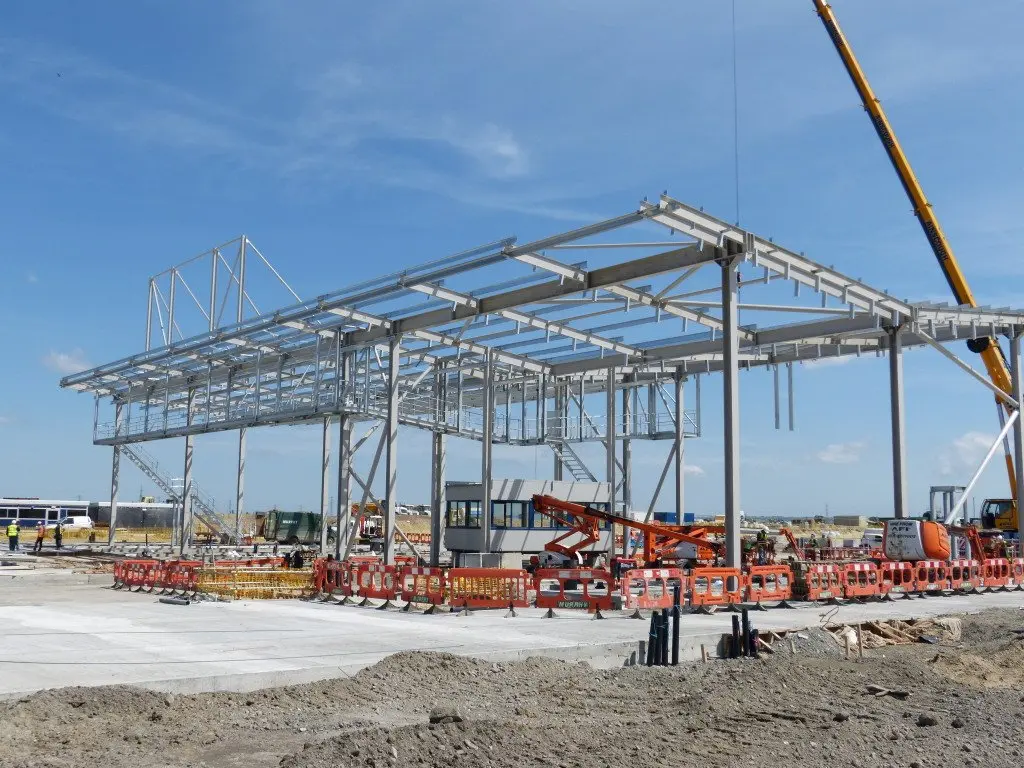It’s so important to be aware of any factor that might affect the load-bearing ability of a steel structure.
In previous articles we’ve looked at how galvanisation can help strengthen steel…
Why intumescent paint slows fire risk…
And what effect edge drilling can have on steel.
But something we’ve not looked at is the critical importance of connecting different pieces of steel together.
It’s why we wanted to take some time today to cover the basics of what’s known as ‘end connections’.
So, whether you’re connecting beam-to-beam, beam-to-column, or you’re connecting a column to a column base here’s what you need to know…
So Many Connections
There are many different ways steel bars can be connected together…
And like anything in this industry there are numerous British Standards to take into account and set measurements you must adhere to.
Naturally, here at Fussey Engineering, we always take all these guidelines into account on every project we’re involved with.
But in the UK, it’s good to know most multi-storey steel frames are connected using ‘nominally pinned joints’.
These are usually referred to as ‘simple connections’.
By extension, putting pieces of steel together using simple connections is known as ‘simple construction’.
Essentially, simple connections involve welding another piece of steel to a supporting beam and then running bolts through it to secure it to other beams.
Sounds simple, right?
But this method is incredibly effective in providing strength and integrity to any steel structure.
In the UK, when it comes to simple connections, the most common form they take involve either a ‘flexible end plate’ or a ‘fin plate’.
Flexible end plates are welded to the supporting beam offsite before the other beam is bolted to the supporting beam during construction.
This is a cost-effective way of doing things, but it does mean there’s little opportunity to change things onsite. This can be a drawback.
The other option is to use a fin plate.
It’s a similar process to the flexible end plate, where the fin plate is welded to the supporting beam offsite and other beams can be attached during construction.
Fin plates make for a popular connection because they’re relatively quick to do.
Of course, there are numerous other types of end connection, but these are the main two to be aware of.
The Right End Connection For The Job
Here at Fussey Engineering, we always consider each specific project in its own right to make an assessment about the type of end connection.
Whether we use a flexible end plate, a fin plate or another type of end connection altogether, you can be confident that we’ll take the utmost care and precision in the construction of every steel structure we design and erect.
Indeed, as well as choosing the right type of end connection…getting the right measurements is fundamental to the process.
So, if you’re planning a major structural steel project and want to make sure every element is thoroughly planned for and engineered with precision, don’t hesitate to get in touch with us here at Fussey Engineering.
One of our expert estimators will be happy to discuss the specifics of your job and give you a clear and honest assessment of the work that needs doing.
You can email us directly at info@fusseyengineering.com or call us on 01469 540 644.


